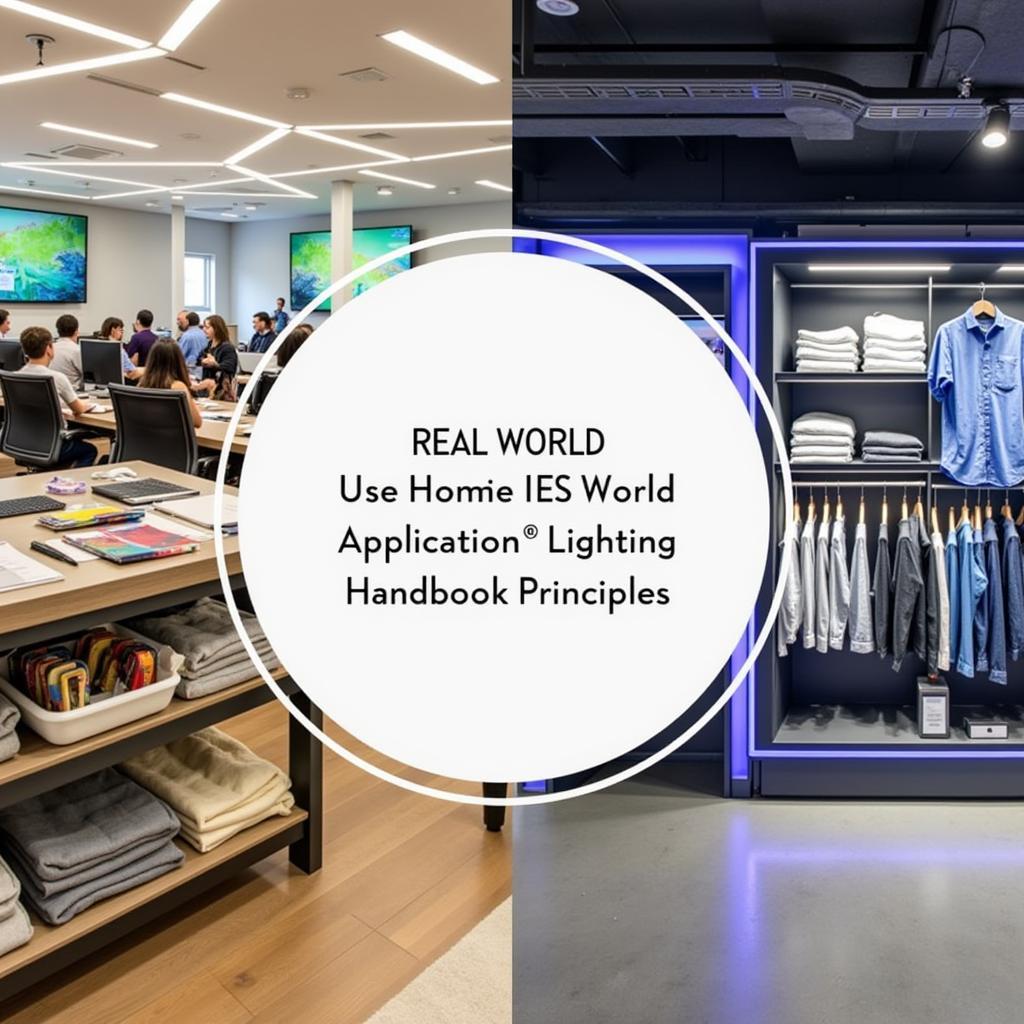The Illuminating Engineering Society (IES) Lighting Handbook is the definitive resource for lighting professionals worldwide. This guide explores the importance of the IES Lighting Handbook, its key features, and how it contributes to creating effective and sustainable lighting solutions.
What exactly is the IES Lighting Handbook and why is it so crucial for anyone involved in lighting design, implementation, or research? This handbook serves as a comprehensive encyclopedia of lighting knowledge, covering everything from basic principles to advanced techniques. It’s the go-to resource for architects, engineers, designers, and researchers who need reliable, up-to-date information on lighting best practices. Having access to this resource allows professionals to design lighting systems that are not only aesthetically pleasing but also energy-efficient and contribute to human well-being. The handbook offers a valuable foundation for understanding the complex world of lighting and its impact on our lives. It helps ensure designs are compliant with industry standards and maximizes the benefits of lighting technology. Just after its first publication, the handbook became an indispensable tool for the entire industry.
Understanding the IES Lighting Handbook
The IES Lighting Handbook exists in two versions: the standard handbook and an abridged version. The standard version is more detailed and suitable for seasoned professionals needing in-depth information. The abridged version focuses on core concepts and is ideal for students or those new to the field. Both versions provide essential knowledge, but cater to different levels of experience and needs. Choosing the right version is important for getting the most out of the handbook.
Key Features and Benefits of Using the Handbook
The handbook covers a broad spectrum of topics including lighting metrics, calculations, design techniques, and the impact of light on human health and behavior. It provides guidance on selecting appropriate lighting equipment, optimizing energy performance, and ensuring safety and compliance. By utilizing the IES Lighting Handbook, professionals can create well-designed lighting systems that improve visual comfort, enhance productivity, and promote overall well-being. The handbook is continually updated to reflect the latest advancements in lighting technology and best practices, making it an essential resource for anyone in the lighting field.
Applying IES Handbook Principles in Real-World Scenarios
The principles outlined in the IES Lighting Handbook have practical applications in various settings. From designing efficient office lighting to creating dynamic retail displays, the handbook offers solutions for diverse needs. It addresses the challenges of outdoor lighting, architectural lighting, and even specialized areas like stage lighting and museum exhibits. Understanding the principles in the handbook allows for effective and creative lighting solutions.
How the IES Handbook Contributes to Sustainable Lighting Practices
Sustainability is a crucial aspect of modern lighting design. The IES Lighting Handbook emphasizes energy-efficient practices, promoting the use of sustainable technologies and strategies. This helps minimize the environmental impact of lighting while optimizing performance. By following the handbook’s guidelines, professionals can contribute to creating a greener future through conscious lighting design.
 IES Lighting Handbook Application Example
IES Lighting Handbook Application Example
Illuminating Engineering Society Handbook: A Crucial Resource
The illuminating engineering society lighting handbook is a cornerstone of the lighting industry, providing valuable information and guidance. Its comprehensive nature makes it an invaluable tool for both novice and experienced lighting professionals.
Navigating the Future of Lighting with the IES Handbook
As lighting technology continues to evolve, the IES Lighting Handbook remains a vital resource for staying informed and adaptable. It serves as a roadmap for navigating the complexities of modern lighting, ensuring professionals have the knowledge and resources needed to create innovative and sustainable solutions.
The illuminating engineering society handbook continues to be an invaluable resource for professionals. Its guidance contributes to creating lighting solutions that are not only functional but also aesthetically pleasing and environmentally responsible. By embracing the principles and knowledge within its pages, lighting professionals can shape a brighter and more sustainable future.
Conclusion
The Illuminating Engineering Society Ies Lighting Handbook is an indispensable guide for anyone involved in the world of lighting. Its comprehensive coverage, practical applications, and emphasis on sustainability make it a vital resource for creating effective and environmentally conscious lighting solutions. By utilizing the handbook’s wealth of knowledge, professionals can contribute to a future where lighting enhances both human well-being and the health of our planet.
FAQ
- What is the difference between the standard and abridged versions of the IES Lighting Handbook?
- Where can I purchase the IES Lighting Handbook?
- How often is the IES Lighting Handbook updated?
- Does the IES Lighting Handbook cover outdoor lighting design?
- What are some key lighting metrics discussed in the handbook?
- How does the handbook address sustainability in lighting design?
- Is the IES Lighting Handbook suitable for beginners in the lighting field?
Common Scenarios and Questions:
Scenario: Designing a lighting system for a new office building.
Question: How can the IES Handbook help determine appropriate lighting levels and energy-efficient fixtures?
Scenario: Planning the lighting for a retail store.
Question: How can the handbook guide the selection of lighting that enhances product displays and creates a positive customer experience?
Scenario: Upgrading the lighting in a historic building.
Question: How can the handbook inform decisions about preserving architectural integrity while improving lighting performance?
Further Resources:
- You might also be interested in our article on the history of lighting technology.
- Explore our guide to sustainable lighting practices for more in-depth information.
Need Help?
For further assistance, please contact us: Phone: 02043854663, Email: [email protected], or visit our office at Zone 34, Bac Giang, 260000, Vietnam. We offer 24/7 customer support.